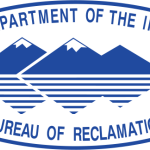- Industry: Government
- Number of terms: 15655
- Number of blossaries: 0
- Company Profile:
A U.S. Department of the Interior agency that oversees water resource management incuding the oversight and operation of numerous diversion, delivery, and storage projects the agency has built throughout the western United States for irrigation, water supply, and attendant hydroelectric power ...
The Bureau of Indian Affairs' mission is to enhance the quality of life, to promote economic opportunity, and to carry out the responsibility to protect and improve the trust assets of American Indians, Indian tribes, and Alaska Natives. BIA is an agency within the U.S. Department of the Interior.
Industry:Engineering
A hole or shaft drilled into the earth to get water or other underground substances. A bored, drilled, or driven shaft, or a dug hole, whose depth is greater than the largest surface dimension and whose purpose is to reach underground water supplies or oil, or to store or bury fluids below ground.
Industry:Engineering
Water on the surface of the earth. An open body of water, such as a river, stream or lake. All water naturally open to the atmosphere (rivers, lakes, reservoirs, streams, impoundments, seas, estuaries, etc.) and all springs, wells, or other collectors which are directly influenced by surface water.
Industry:Engineering
An excavation in the foundation of an embankment dam, usually located upstream of the dam axis or centerline crest which extends to bedrock or to an impervious stratum. The excavation is backfilled with impervious material to form a cutoff and reduce percolation under the dam. See foundation trench.
Industry:Engineering
An excavation in the foundation of an embankment dam, usually located upstream of the dam axis or centerline crest which extends to bedrock or to an impervious stratum. The excavation is backfilled with impervious material to form a cutoff and reduce percolation under the dam. See foundation trench.
Industry:Engineering
Water vapor losses from water surfaces, sprinkler irrigation, and other related factors. Loss of water to the atmosphere. The process by which water is changed from a liquid into a vapor. Water from land areas, bodies of water, and all other moist surfaces is absorbed into the atmosphere as a vapor.
Industry:Engineering
A circular conduit constructed of any one of a number of materials that conveys water by gravity or under pressure. A cylindrical conduit or conductor, the wall thickness of which is sufficient to receive a standard pipe thread. See crown, flexible pipe, haunches, invert, rigid pipe, and springline.
Industry:Engineering
The brake horsepower of a pump is the actual motor input horsepower required to produce the hydraulic horsepower from a pump (flow and head) taking into account the losses incurred within the pump due to friction, leakage, etc. Brake horsepower is the ratio of hydraulic horsepower to pump efficiency.
Industry:Engineering
A pattern of changing the crops grown in a specific field from year to year in order to control pests and maintain soil fertility. A system of farming in which a regular succession of different crops are planted on the same land area, as opposed to growing the same crop time after time (monoculture).
Industry:Engineering
An embankment dam in which more than 50 percent of the total volume is formed of compacted earth material generally smaller than 3-inch size. Seepage through the dam is controlled by the designed use of upstream blankets and/or internal cores constructed using compacted soil of very low permeability.
Industry:Engineering
